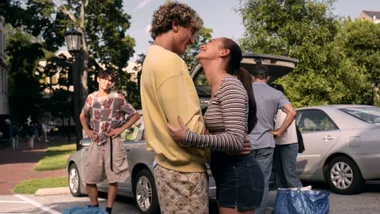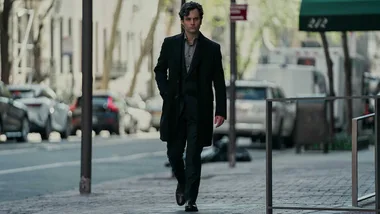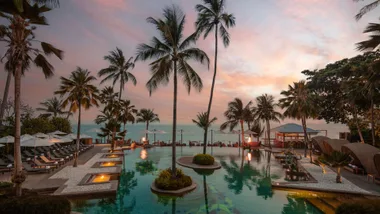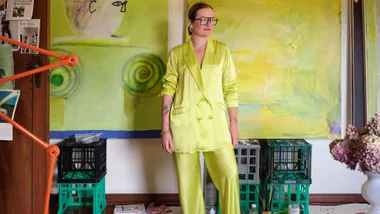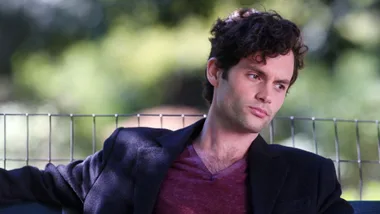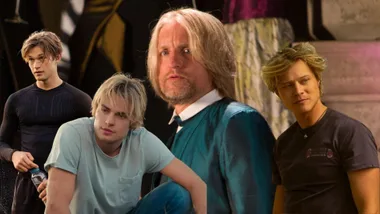Looking back it was the moment that broke me. A pair of knickers. Actually no, they were pants. Knickers suggests something cheeky and frilly and French; these were thick, black and buttock-covering, less stretchy than Spanx but not quite as big as a granny pant. I was like a modern-day Bridget Jones – the eco-warrior version.
But maybe it’s too early to divulge on my undergarments?
Flashback to where it all began on a perfect winter’s Saturday one month earlier. The air is crisp but the sun is bright and I’m strolling home from bootcamp and brunch via my local grocery store. Lost in my daydreams, I suddenly realise that the silver-haired man walking towards me isn’t talking to his dog. He’s talking to me.
“Plastic kills,” he growls.
It takes me a second to process his words. Then I look down at my translucent blue shopping bag. I’ve just been plastic-shamed.
My first reaction is anger: how dare this stranger accost me in the street! And aren’t golden retriever owners supposed to be nice?! My second is defence: I usually take my own hessian bags to the supermarket, but this was a spontaneous trip. The third is, well, shame.
I like to think I’m pretty woke on the topic of plastic pollution and its earth-shattering impact. Earlier this year a whale died after swallowing 80 plastic bags; Australians discard nearly 10 billion pieces of single-use plastic a year – the majority of which is dumped into landfill and takes centuries to break down, leaching toxic chemicals along the way; if we continue at this rate, our oceans will house more plastic than fish by 2050.
But these stats and stories are set for a much-needed shake-up. Almost overnight, the term single-use plastic has entered the public vernacular, and supermarket giants Woolworths and Coles have banned non-reusable grocery bags (well, the latter has flipped backwards and forwards on its decision, a response to customer outcry either way). Globally, a plastic-free movement is mounting, with many pledging to curb their usage and quit the synthetic stuff for a month, like FebFast for earth-conscious booozehounds. Give me prosecco over plastic any day of the week.
And so, with the plastic-shamer’s words ringing in my ears, I sign up.
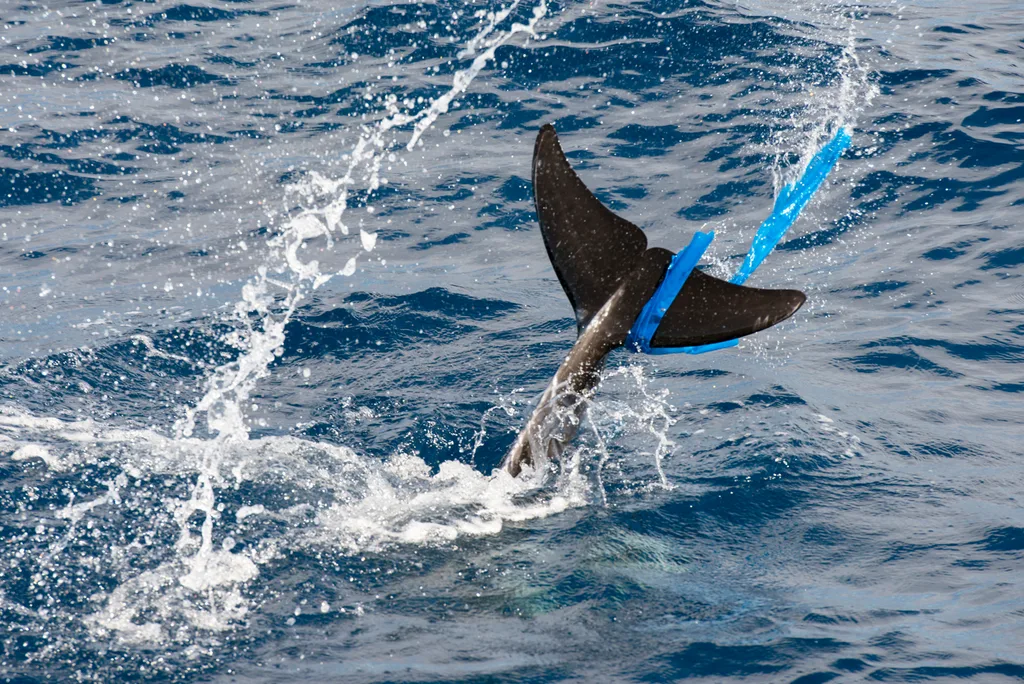
Operation Plastic Not So Fantastic begins with the research phase. I spend a few hours trawling sustainability blogs for tips and tricks, ordering some 100 per cent recyclable toilet paper (it comes wrapped in paper), soapberries (a natural alternative to detergent in muslin packaging) and a jar of tooth powder (instead of paste). I decide that the pre-existing plastics in my pantry and bathroom vanity can stay, but that I’ll refrain from purchasing any new ones – especially single-use – over the course of the month.
I head to the supermarket, hessian bags in one hand, shopping list in the other. I’m already in the habit of prepping and packing my lunches for work in glass containers, so figure this will be a cinch. It’s not until I start perusing the aisles that I realise just how pervasive plastic is – and how many of my dietary staples are off-limits. Cheese, smoked salmon, rice, chicken, salty pink taramasalata dip. All the good things. This isn’t just eco activism, it’s a fad diet.
That said, I delight in my naked fruit and veg – why did we ever bag them anyway? – and the fact that processed snacks and ready-made meals are (literally) off the table forces me to take a more considered approach to food. Even when I’m exhausted after work and have convinced myself that a bowl of corn chips, tomato salsa and cheese covers off all the major food groups.
I talk to my mum, who remembers growing up BP (before plastic). “If we wanted meat, we went to the butcher, if we wanted bread, we went to the bakery,” she recalls. “And for sweet treats, Mum would bake jam drops and nutty chocolate slice.” In 1955, Life magazine celebrated the dawn of a disposable revolution: plastic, it proffered, was a miracle material, a symbol of modernity that would eradicate household drudgery. But it wasn’t until the 1980s that plastic shopping bags were introduced in Australia, marking the advent of throwaway living and today’s culture of convenience.
I make like my gran and bake some sweet potato crisps, a wholesome alternative to the packaged, preservative-laden kind. They don’t quite hit the spot, but I feel virtuous and energised, if not a little hungry.
Later, I tell my friend Anna, a beauty editor, about my new plastic-free life. She looks aghast. “But you love make-up?!” she exclaims, her long lashes fluttering in disbelief. Then she pauses for thought, noting that a few of the prestige skincare brands will introduce 100 per cent recyclable packaging by 2020. Shampoo bars (like soap for your hair) are now a thing, and many in the beauty industry are boycotting traditional glitter, even some of the bright and shiny bloggers. Apparently Coachella was awash with biodegradable sparkles this year.
Natural beauty is all well and good, but the following weekend, while primping and preening for a friend’s birthday drinks, I hit my first roadblock. My mascara has run out. Popping into the chemist for another plastic tube isn’t an option, and I don’t have time to order one of the tin “mascara cakes” I’ve seen online. I make do with a vampy red lip, hoping it will draw attention away from my naked eyes.
Roadblock two comes when I arrive at the bar, a buzzy beachside joint with just the right amount of dinge. The hipster bartender kindly serves my gin and tonic with extra lime – but sans straw. This is a good thing. No, a great thing. We Australians suck on about 10 million plastic straws a day, which inevitably end up in the ocean; they’re too small to be effectively recycled. Now a growing number of venues are phasing them out, with McDonald’s and Starbucks both declaring to ditch them within two years.
It’s bad news, however, for my crimson lip.
Not necessarily, assures my friend’s sister Nat, gesturing towards a little stand selling stainless-steel straws for $3.50 a pop. She hasn’t used plastic ones in years she tells me. Apparently they’re “unnecessary and a choking hazard for turtles”. Do I detect a subtle shaming?
Here’s the irony: we’re huddled outside under a blazing gas heater, and Nat is smoking.
According to eco experts, straws are the new cigarettes: they’re bad for the environment, bad for your health (you’re basically sucking on BPA), and asking for one may warrant a disapproving look.
It’s a positive parallel when you consider that less than 30 years ago, smoking on aeroplanes and inside restaurants was deemed socially acceptable. Perhaps in time, we’ll view single-use plastics in the same laughably antiquated light.
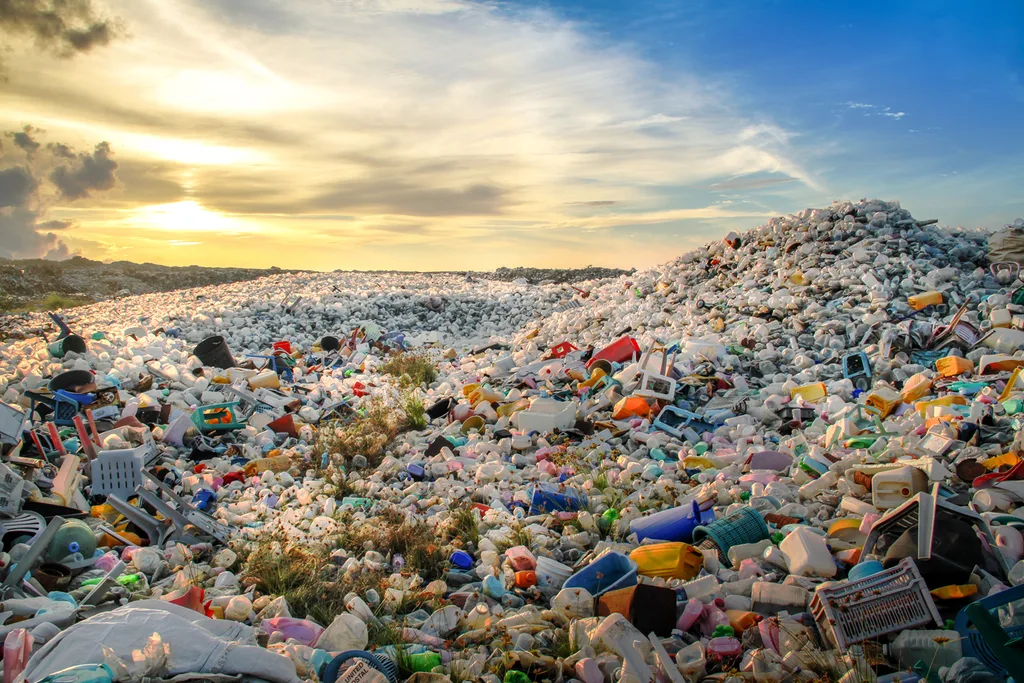
Beeswax food wraps: $17. Glass KeepCup: $34. Bamboo toothbrush: $4.95. The knowledge that your dog’s poo is being collected in a non-toxic, compostable BioBag: priceless.
It’s not lost on me that much of this plastic-free palaver costs time, effort and money – and as a childless working woman, I’m in a position to try it for size. Then again, investing in a few reusable essentials will probably pay dividends over a lifetime.
I discover that the local farmers market is surprisingly cheap – I fill my tote with fresh fruit and veg for only $22. And I find my mecca at the bulk-buy wholefoods store, brimming with pasta, nuts, granola and chocolates to scoop and serve.
Buoyed by my waste-warrior ways (and the knowledge that good food and going green needn’t be mutually exclusive), I head to the butcher with a stack of glass containers. He raises his eyebrow, though agrees to forgo the plastic wrap as he weighs my chicken and beef.
Moments like this make my cheeks burn. Like the time I order a beer at a gig, then sheepishly pull out my stainless-steel tumbler. I don’t go as far as the impassioned plastic-protestors in the UK who are ripping all the unnecessary packaging off their groceries and leaving it at the till.
Of course the issue is bigger than me. Put it this way: the Great Pacific Garbage Patch, a giant floating island made up of accumulated plastic trash, is now three times the size of France. Yet I feel that with each small, uncomfortable encounter, I’m helping to spread awareness – and perhaps put pressure on manufacturers to come to the plastic-free party.
But it all comes tumbling down later in the month. That time of the month, to be exact. The year is 2018 and plastic-free periods, I learn, are a hot topic. They’re kind of like the bum bags of 2017: polarising, old-school and all over the interweb. A quick browse reveals more and more women are snubbing tampons and pads in favour of earth-friendly options.
I speak to Clara Williams Roldan, co-author of Quitting Plastic (Allen & Unwin, out January 2019), who sings the praises of the menstrual cup. “It’s much more convenient,” she says of the reusable silicone vessel, which collects rather than absorbs your monthly flow. “You don’t have to have your bag stuffed with tampons or pads. And it’s cheaper – women spend about $20 a month on their period, which adds up over time.”
It’s a salient point, particularly when I estimate that I’ll buy – and toss – about 15,000 plastic-wrapped tampons in my life. But for me, attempting the menstrual cup will require a period (ahem) of self-psyching, which leaves two options: the washable cotton pads I’ve seen at the markets, adorned with eerie florals that remind me of my great-aunt’s curtains, or Period Pants.
Yep, the aforementioned hip-hugging briefs, complete with super-absorbent lining and leak-proof tech.
I slip them on and wriggle around, jumping up and down and flicking them against my waist. They seem comfy enough … for now. Perhaps even effective.
But I’m bloated and grumpy and I want UberEats. Specifically, some piping hot Thai delivered direct to my door in heinous takeaway containers.
While I grapple with my conscience, I realise it’s the first time in nearly a month that I’ve really wanted for plastic. Periods and pad see ew aside, I’ve managed to counter most cravings with smart everyday swaps – some simple, others more effortful.
Of course quitting cold turkey would be a different beast. We live in a world wrapped in plastic – credit cards, electronic devices, medication, online shopping … But as we strive to save this beautiful blue planet, every little bit helps. And so I vow to keep practising mindful consumption, cutting out single-use plastics wherever possible.
Early the next morning as I sit by the window with my nephews – the garbage truck visit is the highlight of their week – I have an epiphany. One I’ll take with me as I continue on my quest.
We never really throw anything away – it just gets put somewhere else.
This story originally appeared in marie claire Australia, October 2018.

